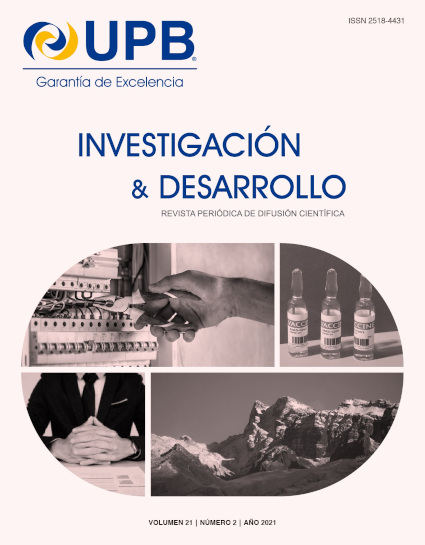EL CINE MINERO Y EL CINE DE MONTAÑA EN BOLIVIA, CAVANDO EN LO NACIONAL
DOI:
https://doi.org/10.23881/idupbo.021.2-6ePalabras clave:
Cine Boliviano, Películas de Montaña, Cine Minero, Estudios Fílmicos, Imaginarios NacionalesResumen
En la tradición fílmica de los países centroeuropeos, en la primera mitad del siglo XX, proliferó lo que se conoció como bergfilme, películas de montaña, que contribuyeron a la construcción de imaginarios nacionales y/o nacionalistas. De manera coincidente, por sus condiciones geográficas y culturales, Bolivia tiene un gran patrimonio visual dominado por los Andes. La presente investigación, recopiló e identificó documentos audiovisuales en los que la montaña tiene un rol protagónico en la construcción del imaginario nacional boliviano. A partir de ese análisis, se develó la importancia del contexto minero, de sus modos de producción y de organización. Utilizando una metodología de revisión documental, de análisis histórico comparativo e iconológico, en los registros cinematográficos tratados de este entorno se encontraron ciertas claves para reflexionar sobre fenómenos políticos, demográficos y culturales, que configuraran a la realidad nacional boliviana.Descargas
Referencias
Chaterjee, Partha, The Nation and its Fragments: Colonial and Postcolonial Histories. Princeton University Press,1993.
Francovich, Guillermo, La filosofía en Bolivia. Edición Electrónica: Rolando Diez de Medina, 2006.
Francovich, Guillermo, Los mitos profundos de Bolivia, Editorial Los amigos del libro, 1980.
Bouysse-Cassagne, Thérèse, et al. Tres reflexiones sobre el pensamiento andino. Vol. 1. Hisbol, 1987
Lozada Pereira, Blithz, Cosmovisión, historia y política en los Andes. Cima, 2007.
Martínez, Gabriel, "Los dioses de los cerros en los Andes." Journal de la Société des Américanistes (1983): 85-115.
Arzáns de Orsúa y Vela, Bartolomé, Historia de la villa imperial de Potosí. L. Hanke and G. Mendoza (eds.) 3, 1965.
Diez de Medina, Fernando. "Introducción al Ande y su habitante: notas para una estética de la montaña", Revista institucional, UPB 7.21: 56-66, 1941.
Mahoney, J. y Rueschemeyer, D. (Eds.), “Comparative Historical Análysis in the Social", Science Cambridge University Press, 2003.
García Jiménez, Jesús, Narrativa audiovisual. Cátedra, 1993.
J. Rodríguez-Camacho, Javier y Bárriga, Pablo. “De Native Son a Viejo Calavera. El cine boliviano que pude ver viviendo fuera”, Socavones. Textos sobre la obra de Socavón cine 2008-2016, Cinemas Cine, 2017.
Fellman Velarde, José, Historia de la cultura boliviana Fundamentos socio‐políticos. Edición Electrónica, 1976.
Rivera Cusicanqui, Silvia. Oppressed but not defeated. Peasant struggles among the Aymara and Qhechwa in Bolivia, 1900-1980. Report (UNRISD), 1987.
Sanjinés, Jorge. Teoría y práctica de un cine junto al pueblo. Siglo Veintiuno Editores, 1979.
Mesa, Carlos (Coordinador), Historia del cine boliviano 1897-2017, Plural, 2018.
Beristáin, Helena. Diccionario de retórica y poética, Porrúa S. A, 1995.
Gaudreault, André, and Tom Gunning. "Early cinema as a challenge to film history", The cinema of attractions reloaded, 2006.
Möeller, Hans. "Mineros Cooperativistas y mineros asalariados, una veta conflictiva." Tinkazos 10.22, 83-102, 2007.
Costa du Rels, Adolfo. Los Andes no creen en Dios. Editorial Los amigos del libro, 1994.
San Agustín. Obras de San Agustín en edición bilingüe. Tomo XX. Enarraciones sobre los salmos (2.º). Biblioteca de Autores Cristianos, Madrid, 1958.
Rubin, Martin. Thrillers. Cambridge University Press, 1999.
Bedoya, Ricardo. “Viejo”, Socavones. Textos sobre la obra de Socavón cine 2008-2016, Cinemas Cine, 2017.
Larionov, Mikhail y Goncharova, Natalya, Rayonists and Futurists: A Manifesto, 1913. Russian Art of the Avant-Garde Theory and Criticism 1902-1934, John E. Bowlt (Ed. y trad.), The Viking Press, 1976.
García Linera, Álvaro. La potencia plebeya. Acción colectiva e identidades indígenas, obreras y populares en Bolivia. Clacso y Prometeo Libros, 2008.
Rodríguez Ostria, Gustavo. “Los Mineros de Bolivia” en Perspectiva Histórica Convergencia. Revista de Ciencias Sociales, vol. 8, núm. 24, Universidad Autónoma del Estado de México, Toluca, enero-abril, 2001.
Antequera Durán, Nelson. “Dinámica migratoria en la zona sur de Cochabamba” en Migración e identidad. Editorial Verbo Divino, Cochabamba, 2008.
Herrero, Carlos F. “Imágenes en combustión” en Cahiers du cinema. España. Especial Nº 2, Caimán Ediciones, Madrid, abril 2008.
Barthes, Roland. “Introduction à l'analyse structurale des récits” en Communications. Recherches sémiologiques : l'analyse structurale du récit, Nº 8, 1966.
Stam, Robert, Robert Burgoyne y Sandy Flitterman-Lewis. New vocabularies in film. Structuralism, post-structuralism and beyond. Routledge, Nueva York, 1992.
Descargas
Publicado
Número
Sección
Licencia
Derechos de autor 2022 Andrés Laguna-Tapia

Esta obra está bajo una licencia internacional Creative Commons Atribución-NoComercial-CompartirIgual 4.0.
Reconocimiento-NoComercial-CompartirIgual
CC BY-NC-SA
Esta licencia permite a otros entremezclar, ajustar y construir a partir de su obra con fines no comerciales, siempre y cuando le reconozcan la autoría y sus nuevas creaciones estén bajo una licencia con los mismos términos.
Los autores pueden realizar acuerdos contractuales adicionales separados para la distribución no exclusiva de la versión publicada del artículo publicado en la revista (por ejemplo, publicarlo en un repositorio institucional o en un libro), sujeto a un reconocimiento de su publicación inicial en esta revista
